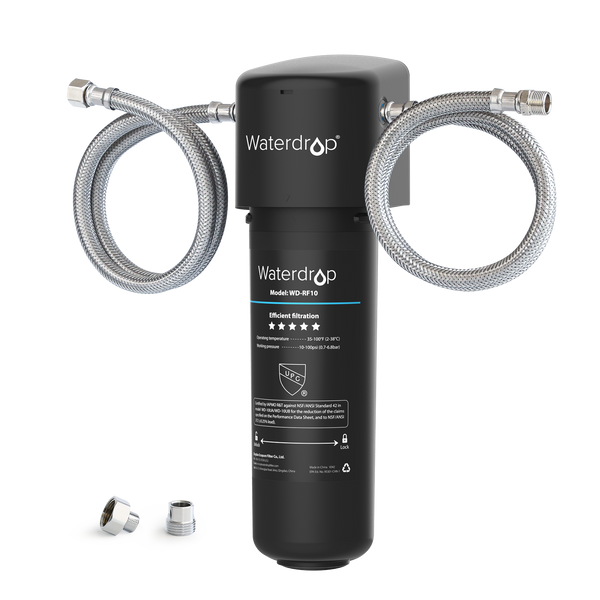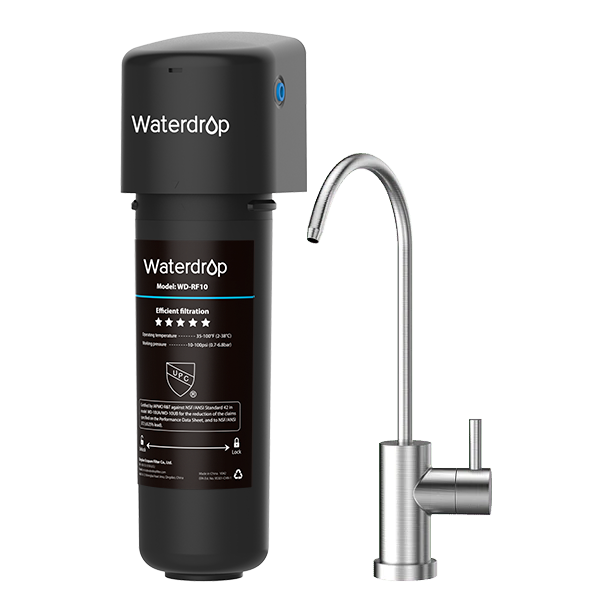How to Get Rid of Blackheads for Clear Skin?
by Dr. Jonathan Doyle - Updated September 20, 2024
Do you often notice tiny black spots on your face, especially around the nose? These are blackheads, a common skin issue that many people struggle with. However, with the right treatments, you can effectively remove blackheads and achieve smoother, more radiant skin. By understanding what blackheads are, where they tend to appear, how to get rid of blackheads, and who is most prone to getting them, you can tackle this persistent problem in a way that’s tailored to your needs.
What Are Blackheads?
Little, dark-colored pimples that appear on the skin are known as blackheads, a form of acne. They are brought on by an accumulation of dead skin cells and oil in the skin’s pores, particularly in the hair follicles. A blackhead forms as a result of the follicles becoming clogged. Excessive perspiration or makeup use are common causes of blackheads.
What Signs and Symptoms Accompany Blackheads?
Blackheads are a result of keratin and sebum clogging the openings of the sebaceous glands in hair follicles. They appear at the skin’s pores and are typically deep brown or black.
- Touching it feels rough.
- Typically seen on the chin, forehead, nose, and other greasy regions.
- Little in size, occasionally visible white pus discharge when pressed or squeezed, and visible on the skin’s elevated surface.
What Causes Blackheads?
Blackheads can have a variety of causes, and each person’s skin type and cleaning routine will influence these causes. However, in general, the primary ones are as follows:
- Inadequate cleansing: there may be makeup residues that clog the pores, the skin may not be completely cleaned, and the tap water used to wash the face is not clean.
- Overproduction of sebum by sebaceous glands in hair follicles: overproduction of sebum causes clogged pores.
- Dead skin cell: Dead skin cell accumulation is caused by both a decreased skin metabolism and an accumulation of aging skin cells in the pores.
- Fatty foods: Consuming an excessive amount of fatty foods can worsen the formation of blackheads
- Hormonal effects: Excessive sebum secretion is caused by hormonal changes that occur during puberty.
- Stress and sleep: Prolonged life stress and insufficient sleep.
- Environmental factors: such as air pollution, a hot and humid atmosphere, etc.
- Makeup: Clogged pores as a result of wearing makeup or skin care products containing oil.
It is the open follicular opening that is filled with oil and keratin plugs that give blackheads their name. When blackheads are exposed to air, they oxidize and turn black. Cleaning with clean water, regulating oil production to prevent clogged pores, and maintaining clear pores with appropriate exfoliation and cleansing products are the keys to managing blackheads.
Where Do Blackheads Tend to Break Out on Your Face?
Due to increased oil production and more clogged pores, blackheads are typically found on the nose, forehead, and chin. These microscopic, black spots develop as a result of impurities, excess sebum, and dead skin cells clogging the pores. The following are the most common spots for blackhead breakouts:
T-Zone: Nose, Chin, and Forehead
Since the T-zone is the face’s most oily area, blackheads are most frequently seen there. Natural oil-producing sebaceous glands are more active on the forehead, nose, and chin. When these oils mix with debris and dead skin cells, they can easily lead to the formation of nose blackheads and other types of blackheads in this region.
Cheeks
Even though they are less common than in the T-zone, blackheads can still appear on the cheeks, particularly in people with oily or combination skin. Oils and bacteria can accumulate on the skin as a result of external factors such as frequently touching your face or using unclean pillowcases.
Around Lips
In addition to being frequently neglected in skincare regimens, the area surrounding the lips can also be blackhead-prone. Clogged pores can be caused by oil production and the use of lip balms or makeup in this area.
Neck and Jawline
Certain people may develop blackheads on their necks or jawlines; these are frequently brought on by hormonal fluctuations or a buildup of perspiration and debris in these areas.
The Importance of Clean Water to Remove Blackheads
Clean water is essential for maintaining good hygiene, which is one of the key factors in preventing blackheads. When you wash your face with clean, filtered water, you can be sure that no dangerous contaminants—like heavy metals, chlorine, or bacteria—are entering your skin and clogging your pores. For flawless skin, here’s why clean water is crucial:
Eliminates Contaminants
Chemicals, minerals, and other impurities found in tap water have the potential to aggravate skin conditions and exacerbate acne. Blackheads are less common when using purified, filtered water because it helps to eliminate these impurities.
Soft on Skin
Many homes have hard water, which can deplete your skin’s natural oils and cause an excess of sebum to be produced. To maintain the equilibrium of the skin and prevent blackheads, use softer, filtered water.
Powerful Cleaning
Your skincare products will function more efficiently if you properly cleanse with our water filter for sink faucet, as this removes any residue from unfiltered or dirty water.
Along with frequent cleansing and exfoliation, adding clean water to your skincare regimen can greatly minimize the look of blackheads and enhance your complexion.
What Skin Types Are Most Likely to Break Out With Blackheads?
Blackheads are a common type of acne that happens when oil, dead skin cells, and other dirt and grime get stuck in your pores. Although blackheads can affect anyone, some skin types are more likely to get them because of differences in pore size and oil production. The following skin types are the most prone to develop blackheads:
Oily Skin
Blackheads are most common on oily skin because of the excess sebum (oil) produced by this type of skin. The likelihood that your pores will clog and result in blackheads increases with the amount of oil your skin produces. People with oily skin usually notice blackheads in the T-zone (nose, forehead, and chin) because that’s where oil production is highest.
Combination Skin
Another skin type that is prone to blackheads is combination skin, particularly in the T-zone and other oily areas of the face. Individuals with combination skin types usually have dry or normal areas on their cheekbones and jawline, and oily areas (usually the T-zone). Blackheads and clogged pores are more common in greasy areas.
Acne Prone Skin
People who have skin prone to acne are inherently more prone to developing blackheads and other forms of acne. This type of skin frequently produces more oil and is prone to breakouts, which can include blackheads, whiteheads, and other types of acne. Blackheads are primarily caused by clogged pores, which are caused by a persistent accumulation of oil and dead skin cells.
Normal Skin
Blackheads are less common on normal skin than on oily or combination skin, but they can still occur on occasion, particularly in regions of the skin where oil production is higher. Even those with normal skin can get blackheads from environmental pollution or improper cleansing.
Whatever your skin type, good skincare practices, such as using clean, filtered water, are essential to avoiding blackheads. Chlorine, chemicals, and heavy metals are examples of impurities in water that can irritate skin and possibly clog pores and cause blackheads.
If you have oily or combination skin, using clean, filtered water in your skincare routine can help lower the likelihood of blackheads. Blackheads can be prevented to a large extent by using filtered water and gentle skincare products that are appropriate for your skin type.
How to Remove Blackheads at Home?
Blackheads are tiny, dark lesions that develop when oil, dead skin cells, and other impurities block pores. Blackheads are a generic form of acne, but you can get rid of them at home with a few easy yet powerful steps. This is how to do it securely and efficiently:
The Role of Pure Water
Maintaining healthy, hydrated skin starts with using pure, filtered water. Clean water helps preserve your skin’s natural balance by removing impurities, chemicals, and minerals that can clog pores and disrupt its equilibrium. Using pure water for cleansing keeps the skin free from potential irritants, reducing the risk of breakouts and promoting a clearer complexion. Additionally, proper hydration from pure water supports your skin’s overall health, keeping it soft, supple, and more resilient against dryness and other common skin issues.
Use a Mild Exfoliator
To get rid of dead skin cells that can clog your pores, use a mild exfoliator. Choose chemical exfoliants such as glycolic or salicylic acid, which dissolve debris and oil by deeply penetrating the pores. Physical scrubs should be used with caution as they can be excessively abrasive and cause irritation or tiny tears, especially on sensitive skin.
Put On a Mask of Clay
Clay masks work wonders at extracting pollutants from your pores. When applied frequently, bentonite or kaolin clay masks can help absorb extra oil and minimize the appearance of blackheads. After evenly applying the mask to your face and letting it dry, rinse it off with lukewarm, filtered water.
Use a Toner to Tighten Pores
Use a toner to help close the pores once the blackheads have been removed. Toners containing niacinamide or witch hazel work especially well at shrinking pores and controlling oil production. Tone your face gently with a cotton pad, paying special attention to areas where blackheads are likely to appear.
Prevent Blackheads in the Future
Retinoids can help control the turnover of skin cells and prevent clogged pores, so include them in your routine. Depending on the requirements of your skin, start with an over-the-counter retinol cream or see a dermatologist for a prescription-strength option. Furthermore, try not to touch your face too much as this can spread bacteria and debris to your skin, causing breakouts and clogged pores.
Removing blackheads at home requires caution not to treat your skin too roughly. Your skin barrier can be harmed by over-scrubbing, over-extraction, or the use of harsh products, which can cause irritation or subsequent breakouts. You can successfully remove blackheads and maintain clearer, healthier skin by adhering to these effortless steps and using clean water in your routine.
Final Thoughts
A regular and gentle skincare regimen is necessary to achieve clear, blackhead-free skin. You can get rid of blackheads and keep them away by proper cleansing, regular exfoliation, and targeted treatments like clay masks and chemical exfoliants. Incorporating pure, filtered water into your skincare routine is also essential for keeping your skin clear of contaminants that can block pores. Recall that patience is essential for the gradual improvement of smoother, clearer skin that results from following a healthy skincare regimen specific to your skin type.
Contaminants Detected in Fruitland Water
Special
Service District
30
Contaminants
EXCEED EWG HEALTH GUIDELINES
EXCEED EWG HEALTH GUIDELINES
30 Total Contaminants in Your Water
Water Provider
Fruitland Water Special Service DistrictPopulation Affected
120,000Water Source
Ground waterExceeds Guidelines
Others Detected






















